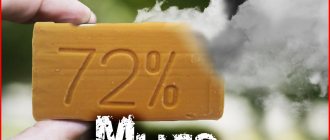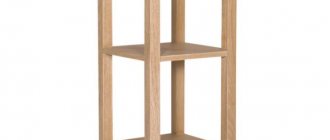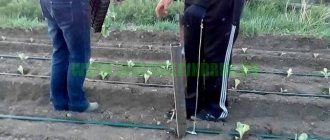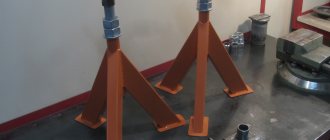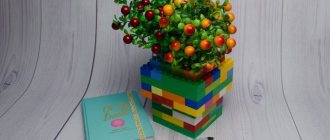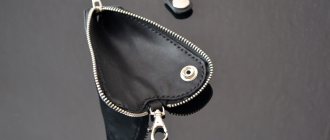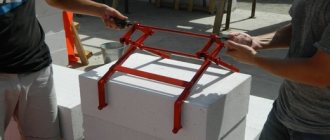Any experienced summer resident knows that to grow seedlings, in addition to good soil and regular watering, you also need a large amount of light. Of course, you need space to accommodate all the plants. It’s good if you live in a large house where you can equip a whole greenhouse. But what if your living space is too small? An excellent solution would be to create a rack for seedlings. It is possible to purchase the product in the store.
Or you can put in a little effort and create it yourself.
See how many benefits you get.
- Saving money - the cost of the necessary material will cost much less than the cost of the finished rack.
- You yourself will create a design that is absolutely suitable for your interior.
- There is no need to adapt to the standard dimensions of the product - you create the appropriate parameters yourself.
- Having made a rack with lighting, it can be placed in any convenient place.
- You personally make the product and therefore are confident in its durability.
The imagination of gardeners is not limited by anything - no one forbids inventing an original “recipe” for a rack for seedlings.
Basic requirements for racking
A rack for seedlings can be made from various materials, but in any case it should be:
- durable;
- suitable for repeated use;
- convenient, i.e. provide comfortable conditions for caring for plants (it is important to have quick access to seedlings for watering, inspection and loosening);
- having an aesthetically attractive appearance.
The dimensions of the structure can be completely different, but racks with the following parameters are considered universal:
- number of shelves – from 3 to 6;
- the length of the shelves is sufficient to accommodate standard fluorescent lamps (i.e., from 50 cm);
- height between shelves – from 40 to 50 cm;
- the distance from the floor to the bottom shelf is from 10 cm.
Often the bottom shelf is used to store various garden tools or household items.
If you do not plan to keep seedlings on the last shelf, the top of the rack can be left open by installing front and rear horizontal supports instead of the top shelf. They will not only support the entire structure, but will also be an excellent place for attaching lighting elements.
Advantages and disadvantages
The advantages of a homemade rack include:
- optimal size and height of the structure;
- the ability to make shelves with the necessary parameters for each type of seedling;
- You can install mirrors and any type of lighting on homemade shelves;
- you can use any materials, make collapsible or stationary racks;
- the cost of assembling a rack is several times lower than purchasing a finished product.
Disadvantages of a homemade structure:
- Not every amateur gardener can make a high-quality and durable rack;
- the need for free space does not disappear;
- To store a disassembled rack, a lot of space is required.
Despite the disadvantages, users prefer homemade designs. They are much cheaper and have optimal sizes, which becomes the determining argument. Ready-made racks are purchased only due to necessity and the inability to make homemade structures.
Material selection
The rack must be strong, waterproof and durable, which should be taken into account when choosing a material. Let's take a closer look at the possible materials for making a rack:
- Tree . One of the most popular materials, because it breathes, looks natural and beautiful, but has a significant drawback - it absorbs moisture. In this regard, when choosing a breed, preference should be given to hard varieties, since they absorb moisture worse than others. These include maple, ash and oak. In addition, it is worth using special impregnations that help solve the problem of wood getting wet.
- Metal . It is better to choose stainless steel as it will prevent corrosion. You can use profiles and even metal pipes as racks, and the shelves can be made from sheet metal or durable mesh. In general, iron structures are durable and quite reliable, but they will be more expensive and will require significant effort in the manufacture of the rack, since working with metal requires certain skills and the presence of expensive equipment.
- Plastic . This material has many advantages - it is durable, easy to wash, and does not absorb moisture. When making shelving, you can use not only plastic sheets, but also pipes.
- Plexiglas . From this material you can assemble a transparent original design that looks stylish and modern. Plexiglas comes in different colors, so you can assemble a rack with multi-colored shelves.
- Plywood . It is easy to process, but gets wet quickly, so it is not the best choice when making racks for seedlings. However, if you still use plywood, then you should prepare several pieces of film or oilcloth to wrap the shelves with it, otherwise their rapid deterioration is inevitable.
The choice of material depends on financial capabilities and engineering and design decisions, however, if the choice is between plywood, plastic and plexiglass, then it is better to give preference to the second or third option. Such materials have a long service life and do not require any coating to protect them from moisture.
Having prepared the material, you should also acquire the necessary tools for constructing the rack, namely: a saw (regular or end-face), drill, screwdriver or regular screwdriver, etc.
What materials can it be made from?
The most common materials are wood, metal and plastic.
Plastic is too broad a class of materials. Characteristics vary greatly depending on the production method, polymer base, and impurities. They can be both durable and not reliable enough. How to be environmentally friendly and contain toxic substances.
The depth or width of the shelf should not be more than 65 cm, otherwise it will be almost impossible to care for the seedlings.
Metal makes the most reliable and durable structures, but the material is not easy to process. More suitable for stationary structures due to its considerable weight.
Growing seedlings only takes a few weeks, so it may be wise to make a collapsible rack with removable shelves.
Wood is a noble, aesthetic and quite durable material, but it also has its drawbacks. The array noticeably loses quality when exposed to moisture for a long time, so it needs protective coatings.
This type of shelving is suitable for owners of large homes, in which there is a permanent place for furniture with large dimensions, where it will not interfere with everyday life.
You can also make a “hybrid” model. For example, a wooden frame and shelves made of metal or organic glass.
The dimensions are determined individually and depend on how much space you are willing to allocate for this rack.
Types of structures
For seedlings, you can assemble the following types of structures:
- Stationary . A suitable option for a specially equipped room for growing plants, since the structure cannot be disassembled, but is fixed in several directions. Its advantages are that it is reliable and durable.
- Collapsible . If free space is limited, then it is better to choose such a design, since it is convenient to move, and after growing seedlings it can be completely removed.
- Window . This design is installed on the windowsill in the window opening. This design is suitable for germinating a small number of seedlings. Window shelving is often used to grow herbs for the table throughout the year.
Each design has its own advantages, so it is better to make your choice based on your own preferences and financial capabilities.
Why do you need a seedling stand in your home?
Some are so accustomed to placing homemade seedlings on window sills, kitchens, balconies and other “utility rooms” that they may now ask the question: “Why do I actually need such a structure if everything is growing well anyway?” Okay, good, but what if you can do it even better?
Using a rack provides many advantages:
- A rack is a mobile thing. You don’t have to make sure that the cat doesn’t knock the boxes off the windowsill or that the children don’t trample your seedlings while playing - just move the stand to a “safe” place.
- You can decorate the rack as you wish so that it fits seamlessly into the interior of your home.
- The rack is compact. You no longer need to make intricate steps, trying not to touch or step on the boxes with seedlings. Just place the stand where it won't disturb anyone.
- There will be no dirty stains left on the window sills (an indispensable attribute of traditional placement of seedlings).
- The seedlings will grow better, since with the help of a rack you can create the most favorable conditions for growing seedlings.
On a windowsill, seedlings may be at risk of being frozen due to the cold coming from the window, or drying out due to the heat emitted by the radiator. By installing a shelving unit in your home, you can regulate the level of illumination of plants by placing phytolamps for illumination. In addition, if the temperature changes, the rack can be moved to another room or simply moved away from the source of cold.
Wooden rack for seedlings
If you are planning to make a shelving unit from wood, you will first need to draw a sketch of it so that you do not forget what dimensions to adhere to. Here is an example of a suitable diagram:
It is better to make shelves from timber in the form of a longitudinal lattice. They will be stronger than plywood shelves, although the structure will be more bulky and heavy.
After preparing the sketch, you need to collect the following materials and tools:
- wooden beams for racks with a section of 45x60 mm (2 pieces of 3 m each, you can immediately ask to cut them into 1.5 m sections);
- wooden beams for crossbars with a cross-section of 20x60 mm (2 pieces, 2 m each, you can immediately ask to cut them into 50 cm pieces);
- wooden board for shelves with a section of 22x100 mm (one shelf takes 5 pieces 75 cm long, then for all 4 shelves you need 4-5 boards of 3 m each);
You can save on boards for shelves if you lay them not end-to-end, but at a short distance from each other. There will be a shelf in the form of a wooden lattice.
- saw;
- screws, nails;
- chisel;
- hammer;
- wood glue;
- roulette;
- pencil.
After preparing all the necessary materials and tools, you can proceed directly to the construction of the rack. This process essentially consists of two main stages - cutting parts and assembling them. We will consider each stage separately.
Cutting parts
The timber purchased from a hardware store must be cut taking into account the following parameters:
- the length of the bars for the manufacture of supporting parts of the rack (racks) is 1.5 m each;
- the length of the bar for the crossbars is 50 cm;
- the length of the shelf boards is 75 cm.
On each beam you will need to measure the required length, draw a line and cut along it using a miter saw or a regular saw. To save overall time, it is advisable to use a circular saw or jigsaw. Based on the cutting results, you need to obtain the following elements of the future design:
- 4 supports 1.5 m long;
- 8 short timber crossbars;
- 15-20 boards for shelves.
To further strengthen the rack, you can prepare bars that will need to be screwed to the finished structure diagonally at the back wall.
Assembly
The prepared boards need to be connected like a construction set to get the finished product. You must act in this order:
- Mark with a pencil where the groove for the crossbar will be located, attaching it to the support block:
The first crossbar should be located at a distance of 23-24 cm from the edge of the support beam, and the subsequent ones - 40 cm from each other. Measurements should be taken from the end of the support beam, which is in contact with the floor. This will ensure that the shelves are at the same height. - At the marking sites, first make cuts taking into account the thickness of the crossbar, and then cut out the grooves using a hammer and chisel. Please note that the crossbar must be recessed into the groove.
- Secure the first cross member between the two support bars by driving it into the groove with a hammer (dimensions in mm in the photo).
It is recommended to pre-treat the fastening points with wood glue and additionally secure them with self-tapping screws.
- After 40 cm, fix another crossbar, and behind it two more (the last crossbar will be at the very top edge). The result should be a kind of staircase.
- Prepare the second side of the structure as described above.
- Lay the boards that will make up the shelves between the two support posts. Secure them to the crossbars using self-tapping screws or nails.
- Cut corners in the end boards so that the support beams fit into them.
- Create the two top shelves in the same way.
- The top shelf can be made longer.
The finished structure will look like this:
If the joints were not treated with glue during assembly, such a rack can be easily disassembled by simply unscrewing the screws. In order not to waste time on disassembly, after growing seedlings, the rack can be moved to another place and used to store books, tools, jars with preparations, etc.
Wooden frame made of timber
It makes no sense to consider in detail how to make shelves for seedlings with your own hands and attach them to a frame made of wooden beams. The assembly technology is similar to the production of metal structures.
First, two rectangles are assembled from timber - the side posts of the frame. The elements are connected to each other by jumpers of the upper and lower trim. Cross members are installed inside the side rectangles. These will be the shelf holders. All elements are assembled using self-tapping screws. The shelves themselves can be made not only from slabs, but also collapsible, using pieces of thin boards.
Advice! Wooden shelves are covered with foil on the front and back sides. In addition to protecting against moisture, the material will act as a reflector for illumination.
Metal structure
This version of the rack is made of a metal corner. It is lightweight, which is its undeniable advantage.
Before you begin assembly, you will need to prepare the following materials and tools:
- metal corner measuring 40x40 mm;
- boards for shelves;
- miter saw;
- self-tapping screws for assembly;
- metal drill;
- electric drill for preparing holes for fasteners;
- roulette;
- marker for marking.
The amount of material needed should be calculated based on how high the racks will be and how long the shelves will be.
Having prepared everything you need, you can cut the metal and begin assembling the rack.
Metal cutting
Cut elements of the future design from a metal corner:
- 4 racks 1.5 m high;
- 4 crossbars 50 cm each;
- 4 shelves, the length of which must correspond to the desired length of the rack.
The length of the rack must be determined taking into account the location where the structure is planned to be placed.
Assembly
The rack is assembled according to the following instructions:
- Drill holes in the places where the elements are supposed to be connected.
- Fasten the parts with self-tapping screws (or you can use rivets).
- Cut the boards using a saw into the required size to cover the space between the supports of each level and create shelves.
- Place the shelves between the rails to create a finished shelving unit.
How to assemble a shelf rack using only metal profiles is shown in this video:
Manufacturing procedure
Assembling the rack is not particularly difficult, but requires preliminary selection of the material and type of lighting. The most popular option is a wooden rack, which does not require the use of complex tools and can be made quite quickly even by inexperienced people.
Let's look at the procedure:
Tools and materials
To assemble the racks you need to prepare:
bars 45 × 45 mm for the manufacture of vertical supports (racks);
bars 30 × 60 mm for making crossbars;
self-tapping screws 50 mm long;
plywood for making shelves;
hacksaw, electric saw or jigsaw;
ruler, square, tape measure;
electric drill with a set of drills.
Only the most necessary tools and materials are listed. You may need other accessories during the assembly process.
Manufacturing
Procedure:
- Racks are cut from a 45 × 45 mm block (4 pieces per rack). Their height is calculated by multiplying the distance between the shelves by their number, plus the height above the floor;
- Cross members are cut from a 30 × 60 mm block (two for each shelf, plus two short cross members between the posts on the short side);
- On the racks, using a ruler, a pencil and a square, markings are made along which the crossbars are installed;
- It is recommended to strengthen the assembled rack with metal window corners installed on the rear side of the structure. They will provide stability and protect the rack from swinging to the sides.
At this point, the assembly of the rack is considered complete. However, the final finishing and installation of lighting remains.
The final coating (this is not a mandatory element, but it will not be superfluous) is applied with a regular brush. You can paint the rack or varnish it.
Installation of lighting is carried out based on the design of its elements. Phytolamps are produced in the form of linear elements, which only need to be fixed in the right place under the shelves.
LED strips can be attached to their own adhesive layer, or use a special aluminum profile. All this work is not difficult, requiring only accuracy and attention.
Assembly from other materials
The use of other materials does not complicate the assembly process too much, but requires the use of other connecting elements.
If metal guides are selected, self-tapping screws with a drill tip are used to connect the parts.
For the plastic frame, special fittings are used - tee or double corners.
The process of assembling such racks differs little technologically from that described above. The same assembly scheme, only for plastic pipes, racks are not needed, but short sections are used. They determine the height of the shelves above each other. For shelves, sheet materials are also used, which are coated with varnish or paint.
Window sill rack
The problem of limited space can be solved by a window rack on which you can keep a large number of seedlings.
To make such a rack you will need:
- wooden beam with a section of 20x20 mm;
- a sheet of plywood (if you decide to make the shelves from it);
- jigsaw;
- screwdriver and screws or nails and hammer;
- roulette;
- pencil.
Having prepared everything you need, you can start making the rack:
- Beam into pieces mode: for support you will need 4 bars of 80 cm in length, for crossbars - 4 bars of 27 cm in length.
- Mark each support bar. We measure 5 cm from the top edge, and 37.5 cm from the bottom.
- To assemble the side part of the structure, it is necessary to nail two crossbars to two support bars in the places where the mark was made. For structural stability, a profile can be attached diagonally to each supporting structure.
- Assemble the second side part of the structure using the previously indicated method.
- Nail between the sides of the shelf. They can be made from the same timber or cut from a sheet of plywood. The shelves of the rack can be not only wooden, but also glass, but for reliability they should be secured with adhesive gaskets.
- If necessary, you can attach backlight lamps under each shelf.
The diagram shows standard dimensions that can be adjusted taking into account the width and depth of a particular window opening.
Types of racks and materials used for their manufacture
So, a rack for seedlings is a structure consisting of racks and a certain number of shelves. The design of the rack is very versatile, which allows it to be used in any conditions. This structure can be placed in different parts of the apartment, and any flat surfaces can be used for its installation, for example:
- Table or window sill.
- Floor (the rack can be equipped with wheels to be able to move it).
- Attached to the wall.
In order for the apartment owner to maintain the structure, it must meet certain requirements. Here they are:
- Durability and reliability (to withstand boxes of seedlings).
- Resistantly transfer moisture.
- Durable and reusable.
- Comfortable for seedling development.
- Availability of plant maintenance (watering, loosening the soil, inspection).
- Attractive appearance,
- Possibility of installing lighting.
- Compact and maximum efficiency.
- Possibility to move to another location if necessary.
As for the materials used for the manufacture of home shelving, it all depends on the wishes and capabilities of the owners of the premises. However, when choosing, you need to remember that the design should be durable and practical. It is desirable that the material can be easily processed.
For example, for the manufacture of racks they use:
- Wood blocks.
- Metal perforated tubes.
- Plastic pipes.
To create shelves use:
- Metal sheet.
- Wooden lining.
- Glass sheet at least 6 cm thick.
- Plexiglas.
Let's look at each home shelving design separately.
Rack made of plastic pipes
This type of structure is assembled like a metal rack. It has a low specific gravity, so it is easy to move around the room.
To make a rack you will need:
- PVC pipes;
- hacksaw;
- tees (4 pcs.);
- corners (12 pcs.);
- corner crosspieces (4 pcs.);
- roulette;
- marker for marking.
You can assemble the rack according to the following instructions:
- Cut 4 long pipes for supports (180 cm each), 6 crossbars (50 cm each), 4 crossbar pipes (150 cm each) and 4 “short” pipes 30-40 cm each.
- First take one crossbar 50 cm long and put two tees on it at an equal distance from each other. Do the same with the second cross member.
- Take 4 pipes of 180 cm each and cut each in half (i.e. 90 cm). Connect the two parts together using a corner cross. Connect the rest as well. There should be 4 such elements. Place two elements parallel to each other.
- First, insert one assembled cross member into the crosspiece, forming the letter “H” from the pipes. Do the same with the second pair of elements. The result was two separate “H” shaped structures.
- Take two more crossbars 50 cm long. Using corners, secure one at the top and the second at the bottom of the H-shaped structure. You will get a new figure - a figure eight, like on an electronic watch. There will be two such parts. These are vertical supporting walls. Place them parallel to each other.
- Insert a crossbar pipe into the last free holes of the crosspieces. This way the two side support walls will be connected to each other and will be able to stand stably.
- The resulting frame is only missing a “shelf”. Using angle brackets, secure one “short” pipe at each end of the crossbar pipe. The result will be a bracket-shaped structure. There will be 2 of these shelf parts. Insert them into the remaining free holes of the tees, placing the shelf parts parallel to each other.
- Place the pots with seedlings on the “shelf”. You can install a pendant lamp on top, firmly securing it to the side posts.
You can put a sheet of plywood on the bottom of the shelf if you are using pots, but it is better to just choose tall cassettes or spacious boxes for seedlings.
Features of brackets and mobile structures
The stationary rack can be made in the form of a bracket. Initially, two vertical posts with holes of the required size are attached to the wall. Brackets are inserted into them, onto which shelves are laid. The top shelf serves as the basis for mounting a lamp that heats the seedlings at the previous level of the structure.
The algorithm for assembling mobile racks is not much different from the formation of a stationary structure. The key point is to additionally install a horizontal support at the bottom, which is 2 times the width of the rack. This measure will prevent the risk of the structure with seedlings tipping over.
Homemade pallet rack
If the seedlings will be grown in a small apartment, the problem of placing containers with plants can be solved using a narrow vertical pallet structure mounted on one of the walls. To make it you will need:
- pallet (cargo box);
- wooden beams (4 pieces, 3 m each);
- wooden slats;
- hammer;
- nails;
- pencil;
- roulette.
You can assemble the rack according to the following instructions:
- We are making a three-bay rack. Cut the timber 1.5 m long. You will get 8 parts.
- Cut 18 slats as long as the width of the pallet.
- Take two bars and place them parallel to each other. Step back from the top as much as the thickness of the pallet (about 10 cm). Fasten the slats to the bars with nails so that you get a structure similar to a ladder. Pallets will be installed on these slats as shelves. The distance between the shelves should be about 40 cm.
- Place the pallets on the slats. You can secure them with nails or put them on wood glue.
Why use shelving
Before arranging a window sill, you need to understand for what purpose the rack or shelf is used to place pots and other containers with seedlings on it.
If you are an avid gardener or summer resident, then you know how and where to grow seedlings.
The main condition for good growth is the optimal amount of light, humidity and temperature.
It is not for nothing that window sills turn out to be the most practical and functional place for such tasks.
Selecting a lighting fixture and installing backlighting
If you plan to place the rack in a fairly well-lit place, then you do not need to install additional lamps, otherwise they will still need to be installed to guarantee the seedlings the necessary daylight hours.
The lamps must provide bright light, but at the same time emit a minimum of heat, otherwise the seedlings can get seriously burned. In this regard, any lighting fixtures except incandescent lamps can be used for lighting. Here are the best options:
- High pressure sodium lamps . These lamps emit an orange-yellow glow that promotes seedling growth. In addition, it does not irritate human eyes, so such lamps can be used in residential areas. Their disadvantage is their high cost and the need to use a power regulator when installing them.
- Phytolamps . Although the spectrum of such lamps is good for plants, it is dangerous for human eyes. When installing, they need to be adjusted so that the light hits the seedlings from above and from the sides. The distance from the lamp to the tops of the plants should be at least 10 cm.
- Fluorescent lamps . Such lamps produce cold light, which lacks the red component of the spectrum. They need to be installed at a distance of 30-60 cm from the seedlings. In addition, to ensure uniform heating of the plant, the lamps should protrude 5 cm from the edge of the shelves.
- LED bulbs . Plants that are illuminated by such lamps produce a larger harvest, so they are used more often than other options. In addition, such lamps consume little electricity and also combine the spectra most needed for plants - blue and red.
Since LED lamps are in greatest demand, let’s look at installing the backlight using them as an example. In an electrical goods store, you need to purchase lamps whose length corresponds to the size of the rack (or rather, the length of the shelves).
At the same time, it is extremely important to follow safety precautions - do not leave exposed electrical wires in the public domain, and even turn off the electricity during preparatory work.
Required materials and tools:
- red and blue diodes on the tape;
- glue “Moment” (transparent);
- plastic base or plinth with cable channel;
- screwdriver and screws;
- switch;
- plug and electrical cord;
- insulating tape;
- reflectors.
Instructions for installing the backlight are as follows:
- Attach a chain of LEDs to a plastic base.
- Connect the tape to the switch, and from it stretch a wire with a plug to the socket. If you plan to pass electrical wiring through metal corners, then you need to drill holes in them. Of course, you can take a simpler route - carefully distribute the wire along each metal element.
- Secure the base with tape to the bottom of the shelf. To do this, you can use transparent Moment glue.
- Attach mirrors or sheets of foil to the sides of the rack to reflect light.
If the shelves are made of plexiglass, then through them the light will fall unhindered on the seedlings, which is an additional advantage of this design.
In the following video you can clearly see how LED strip lighting is installed in a finished plant rack:
To grow healthy and strong seedlings, it is imperative to provide the seedlings with sufficient heat and light. A favorable microclimate for them can be created using racks for seedlings, which will also help solve the problem of lack of free space. You can make similar designs yourself using the above ideas, diagrams and instructions.
0
0
Copy link
Backlight
Seedlings are grown in February-March, and this is not the sunniest time of the year. Plants may absolutely lack the light necessary for photosynthesis and mass growth. To solve this problem, additional lighting is installed on the racks. There are several types of lamps suitable specifically for growing seedlings.
- The most affordable and simplest option is incandescent lamps (17 Lm/W). They are ineffective because they provide little light and at the same time generate a lot of heat, which can harm the seedlings.
- Low-power fluorescent lamps, such as LB or LBT daylight (70–100 Lm/W). They produce cool light with a low proportion of red radiation.
Shelving illuminated with fluorescent lamps
- Long-lasting and economical LED lamps (80–110 Lm/W). Their advantage is the ability to select the desired intensity and suitable spectrum.
LED lamps are easy to use and efficient
- Metal halide sodium lamps (up to 100 Lm/W) are efficient and economical, and are also easy to use. The downside is that they do not contain a portion of the blue spectrum.
- Gas-discharge sodium lamps (200 Lm/W). Their yellow-orange glow is not irritating to the eyes, but they will require a regulating device.
- The glow of mercury lamps is as close as possible to the level of daylight.
- Phytolamps are very popular among gardeners, including for lighting seedlings. They are compact, environmentally friendly, economical and durable. Even if the seedlings are located close to such a lamp, burns will not form on the leaves.
Phytolamps for lighting seedlings
- Also used are xenon gas-discharge lamps (100 Lm/W), halogen (25 Lm/W), linear (47 - 93 Lm/W), and neodymium.
When choosing a lighting device, pay attention to the presence of a choke. It gets very hot and heats up the shelf on top. Therefore, leave a gap of 4–6 mm between the shelf and the device. Lamps with electronic ballast do not have heating problems.
Whatever type of lighting you choose, keep in mind that seedlings will do better on the south side. To improve lighting efficiency, install reflective foil screens on the sides and back of the rack. Do not forget that each plant has its own level of illumination. You can adjust the intensity by changing the height of the lamps above the plants.
Installation of LED lighting
Due to their ease of installation and operation, LED lamps have become the most common among gardeners growing seedlings. You will need:
- red and blue LEDs;
- hot glue or thermal paste;
- a base for placing strips of LEDs (can be made of any material);
- a power supply that will provide the required voltage and current stability;
- electrical wire and plug.
To provide the required number of rays of a certain spectrum, alternate the LEDs on the strip: 1 blue, 2 red, and so on until the end of the strip.
Alternate red and blue LEDs to provide plants with the right spectrum of light
- Solder the diodes together using paste and lead them to the driver.
- Connect the driver to the switch and plug.
- Attach the LED strips to the prepared base.
- Collect everything into a single chain.
You can also use an automatic timer and set it to 14 hours of lighting. This is very convenient if you do not have the ability to control the illumination of seedlings in the evening and at night.
Illumination from fluorescent lamps
If you plan to install fluorescent lamps on the rack, then take into account their length when calculating the size of the rack. In order to pass the electrical wiring, you will need to drill additional holes in the metal corner. Or you can carefully distribute the wire along the metal elements.
- Attach 2 lamps under each shelf - at the front and rear crossbars. Leave a gap of at least 1.5 cm between the shelf and the lamp.
- For fastening, it is recommended to use cut tin tape or metal wire.
Install two lamps above each shelf
Remember to follow safety precautions when working with electricity. Exposed wires should not be in the public domain. All work must be done with the power off.
Metal wall shelf "vine"
This is the author’s version of the flower shelf, but we also chose it for consideration in the master classes. For work we will need:
- Sheet iron or fittings.
- Paint, brushes.
- Parts for fastening the shelf.
Step-by-step diagram-instructions for the master:
- The main difficulty with this model is the required blacksmithing skills. If you do not have such practical skills, contact a specialist to make just the frame for you. You can arrange the rest of the details yourself.
- The frame should be in the form of a weaving vine.
- Prepare the leaves-stands. These are wide platforms with sufficient thickness of material. We need to weld the blank leaves to the branches of the vine.
- We cover our product with paint and varnish for additional shine.
- We form the fastening elements and hang the decorative shelf on the wall.
- For additional fixation of flower pots, you can slightly bend the edges of the leaf pads to make small border borders.
Such work will not be difficult for those craftsmen who have already had experience working with metal decorative products. For beginners, this variation will require some financial costs. However, beauty and unique style will decorate your home and transform the interior.
Today there are a huge variety of designer models for home decoration. Much of the work is done online, allowing you to learn creative skills in real time under the guidance of experienced mentors. If you want to make adjustments to the interior of your own apartment, successfully arrange your home flowers and organize your own mini-garden, start learning right now. And the results of fruitful work will not keep you waiting!
https://youtube.com/watch?v=etDbFsrltK4
How to assemble a rack
You need to decide on the dimensions of the structure:
- overall size;
- height and width;
- distance between shelves;
- shelf size.
If the rack is stationary, then it must be assembled immediately in the room in which it will be installed.
- The frame of the side posts of the rack is made from a profile pipe; for this you need to weld or bolt two identical rectangles.
- At a distance of 20 centimeters from the bottom of the rectangles, a transverse section of pipe is welded for stability of the structure.
- The same beams need to be welded from the top.
- Reinforce the structure by welding one jumper approximately in the middle in the side rectangles.
- To attach the shelves, you need to make holes in the rack posts, the number of which will be equal to the number of shelves. The minimum distance between holes is 25 cm.
- Cut the corner profile exactly to the width of the shelves.
- Attach the profile to the posts at the drilled holes using bolts and nuts.
- Cut plywood or OSB and place it on the profile; if desired, you can cut out shelves from sheet iron.
As you can see, there is nothing complicated in this design, and it is assembled quite simply.
You can also make a rack without resorting to welding; in this situation, instead of a profile pipe, a metal corner of 5 is used. In terms of cost, such a design will be a little cheaper and will be easy to disassemble.

